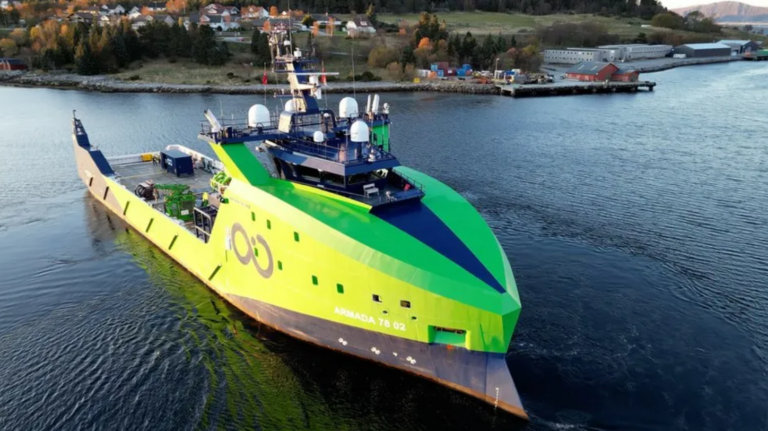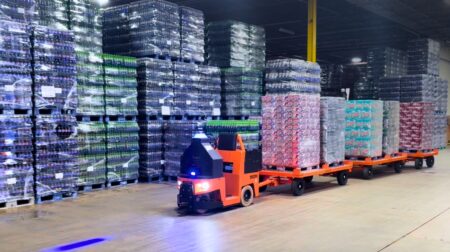Oceanic robotics specialist company Ocean Infinity (OI) is piloting remote controlled ships ahead of future commercialisation plans for the vessel.
The ship is part of OI’s new “Armada” – a fleet eventually of 23 vessels – that will survey the seabed for offshore wind farm operators and check underwater infrastructure for the oil and gas industry.
Equipped with advanced technology including state-of-the-art Cameras, microphones, radars, GPS and satellite communications systems, the ship is setting sail from a Norwegian fjord, where the lime-green vessel is undergoing testing.
The pace autonomy, robotics and remote operation, along with artificial intelligence, advancements have seen semi-remote ships in operation around the world.
In Norway, for example, there’s an 80m (262ft) electric container ship running back and forth between a fertiliser plant and a local port.
In Belgium and Japan there are ferries autonomously navigating between destinations, berthing and un-berthing at each location. And in China, too, big autonomous container ships shuttle between coastal cities.
The British company is also Sea-Kit International is designing and building a fleet of these crewless boats.
One was recently sent to Tonga to map the still-active underwater volcano that blew up spectacularly in 2022, a task considered too dangerous to involve people.
The International Maritime Organisation (IMO) is currently grappling with all the issues surrounding autonomy at sea. It hopes to introduce voluntary codes defining best practice by 2028, with a view eventually to making them mandatory.
Ocean Infinity captain Simon Macaulay said: “I could foresee a situation where you have a master mariner who’s in charge of a vessel remotely or a number of vessels remotely.
“Obviously that needs legislation change and part of what we’re building up here is the knowledge and safety case. We send probes and satellites to the other side of the Solar System, so this can be done.”










